Jade plants are among the most popular succulents, both for their beauty and their reputation for bringing fortune to those who grow them. But what should you do with your jade plants when the winter's chill rears its head? Can you keep them outside, or do you need to shelter them from the cold? We've done some digging, and here's the low down:
Jade plants need hot, dry weather to thrive. They cannot survive outside in winter in most of the United States. However, they are cold hardy in zones 10 and 11 where winter temperatures do not dip below freezing.
In this article, we'll take a closer look at how to care for jade plants, both over winter and throughout the year. We'll see how to repot them, where to place them, and how they deal with heat and cold. We'll also learn more about the jade plant's toxicity to pets and lifespan. Read on to learn more about this popular plant!
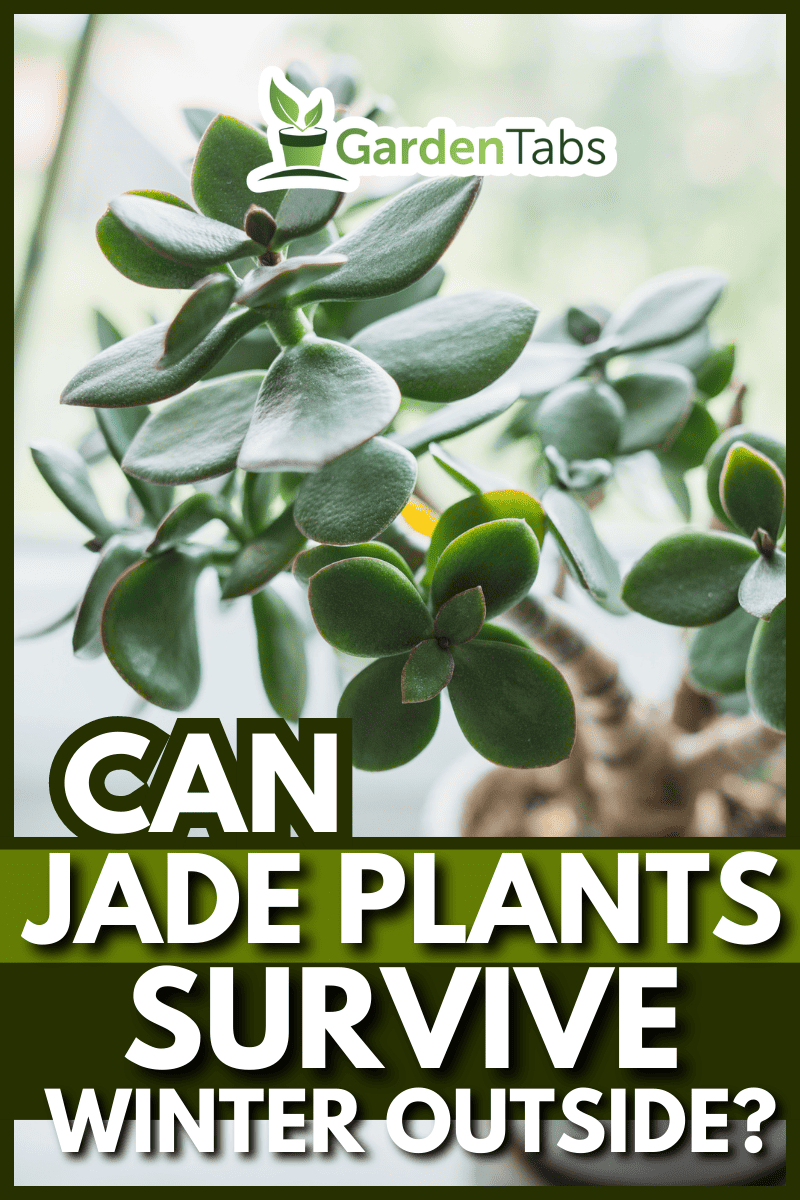
Can You Keep Jade Plants Outside in Winter?
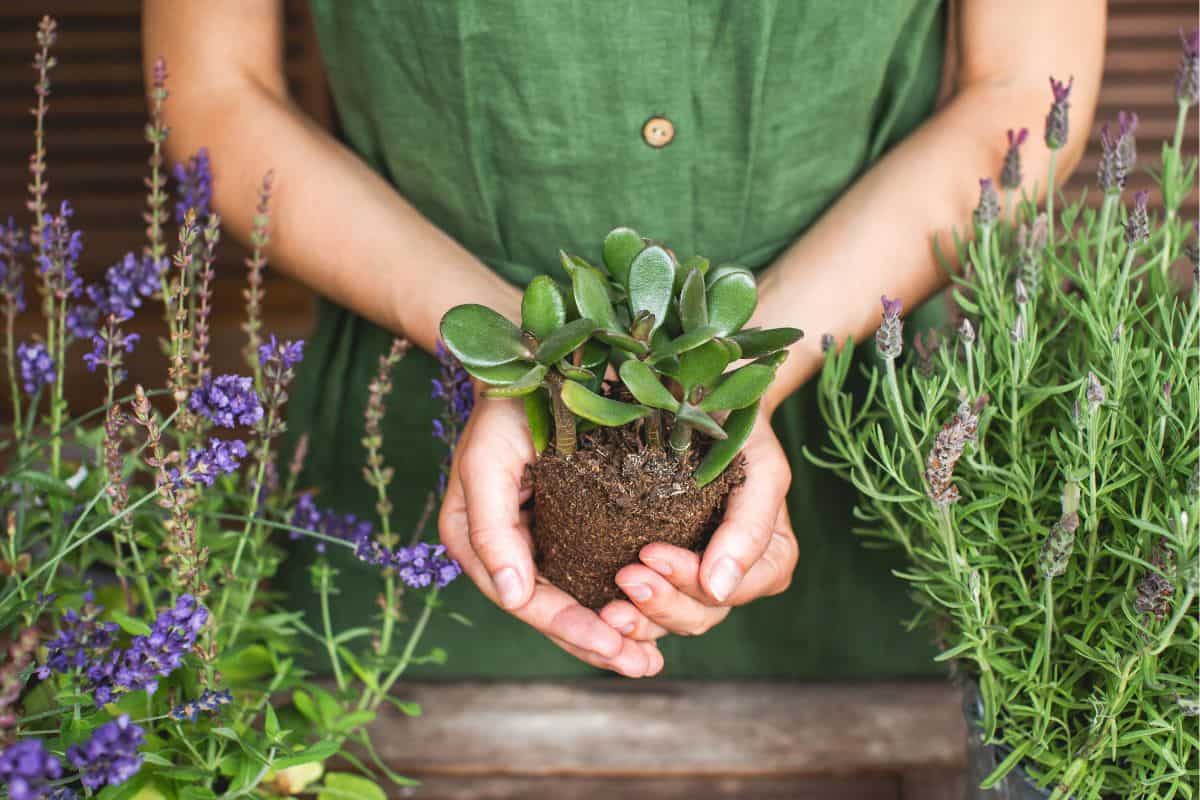
Jade plants, also known as lucky plants or money trees, are best known as low-maintenance houseplants. While they are most often grown indoors, it is also possible to grow them outside. However, these succulents prefer warm climates and can only survive winter in warmer locations.
A plant's ability to survive outside over winter is known as its cold hardiness. The continental US is divided into eleven hardiness zones, depending on their average lowest temperature in the year. Jade plants are only cold hardy for the warmest, zones 10 and 11.
Zone 10 covers parts of southern Florida and California, while zone 11 covers the Florida Keys, Hawaii, and Puerto Rico.
If you live in one of these areas, you can grow your jade plant outside without needing to bring it inside in the winter. However, in the rest of the United States, you'll need to bring in your jade plants in winter to protect them from frost.
How to Overwinter Jade Plants
Unless you live in hardiness zone 10 or 11, you'll need to keep your jade plants inside in winter.
If you keep your jade plants outside during the warmer months, bring them inside before the first frost. While jade plants can survive cool temperatures, it's best to bring them in once the temperature drops to 50º Fahrenheit or lower.
Because jade plants need to be brought inside during winter in most locations, it's best to grow them in pots even if you keep them outside the rest of the year.
If you have jade plants growing in the ground that you want to bring inside, you'll need to transfer them into containers.
If you want to transfer in-ground jade plants to pots, don't wait until fall to do so. You should try to transfer jade plants to pots early in the growing season. This will help them stay healthy and deal with the shock of being transplanted.
Should I Water My Jade Plants in Winter?
Your jade plant will grow more slowly or even go dormant as temperatures drop. Because of this, they'll need even less water than the tiny amount they typically require. Do not water your jade plants unless the soil is completely dry in autumn and winter.
How to Repot Jade Plants
Jade plants are relatively easy to move into pots. You can keep them in relatively small pots to control their growth since jade plants don't suffer from being root bound in pots.
Remember to use a potting mix that drains well when potting jade plants. Also, while it should go without saying, you should make sure your pot has drainage holes. Unfortunately, some companies sell pots that lack drainage holes. It's best to avoid these, especially with plants like jade plants.
As mentioned before, the best time to transfer jade plants to new pots is early in spring. Fight the urge to water your jade plants after repotting them. Give it a week or so with the new soil before watering it.
How Often Should You Repot Jade Plants
Jade plants grow slowly and don't need to be repotted often. Because they can stay healthy when root-bound, you only need to repot your jade plant every 5 years or so if it is already at the desired size.
However, if you want your jade plant to grow more, you'll want to repot it more frequently. Because they grow slowly, repotting young jade plants every 2 or 3 years is enough to allow them to grow.
Where Should You Place a Jade Plant Indoors?
Jade plants can grow very well indoors as long as they are in the right conditions. This means considering the light, temperature, and humidity of your indoor space.
When it comes to light, young jade plants enjoy bright, indirect light. Southern and western-facing windows are often good options to get them plenty of bright, indirect light. Ideally, try to get them 6 hours of this light every day. Direct sunlight can scorch young jade plants. Once your jade plant is well established, it can also handle direct sunlight.
Temperature-wise, jade plants enjoy the same temperature most of us do. A range of 65 to 75º Fahrenheit in the daytime and during the growing season suits jade plants well, and they do well with temperatures as low as 55º Fahrenheit at night and in the winter.
Speaking of winter, keep your jade plants away from cold and drafty windows when the temperatures drop outside.
As for humidity, jade plants like it dry. They grow best in conditions with 30 to 50% humidity. In general, the humidity in most rooms in your home will be okay for jade plants, although you may not want to keep them in bathrooms.
What Happens If My Jade Plant Gets Too Cold?
We've seen that jade plants don't like the cold, but what does that really mean? Well, it depends on how cold your jade plant gets.
At temperatures under 55º Fahrenheit, your jade plant will go dormant. It will stop growing, which allows it to save energy and nutrients until temperatures rise again.
Jade plants can stay dormant for a long time and still recover when temperatures rise again. However, it is especially important that you not overwater your jade plant when it is dormant. Doing so can lead to root rot, which can be fatal to your jade plant.
Dormancy isn't a major issue for your jade plant, though. The real trouble comes if it reaches temperatures below 32º Fahrenheit. At freezing temperatures, the moisture stored in the plant can freeze. When it does, it forms crystals that damage the plants structure.
This usually starts in the leaves, and if your jade plant only spends a short time at freezing temperatures, it may just lose some of its leaves. In this case, you should still be able to revive your plant. If it spends too much time in freezing temperatures, though, entire limbs or even the whole plant can be killed. If this happens, it will be difficult, if not impossible, to revive your jade plant.
Can Jade Plants Get Too Hot?
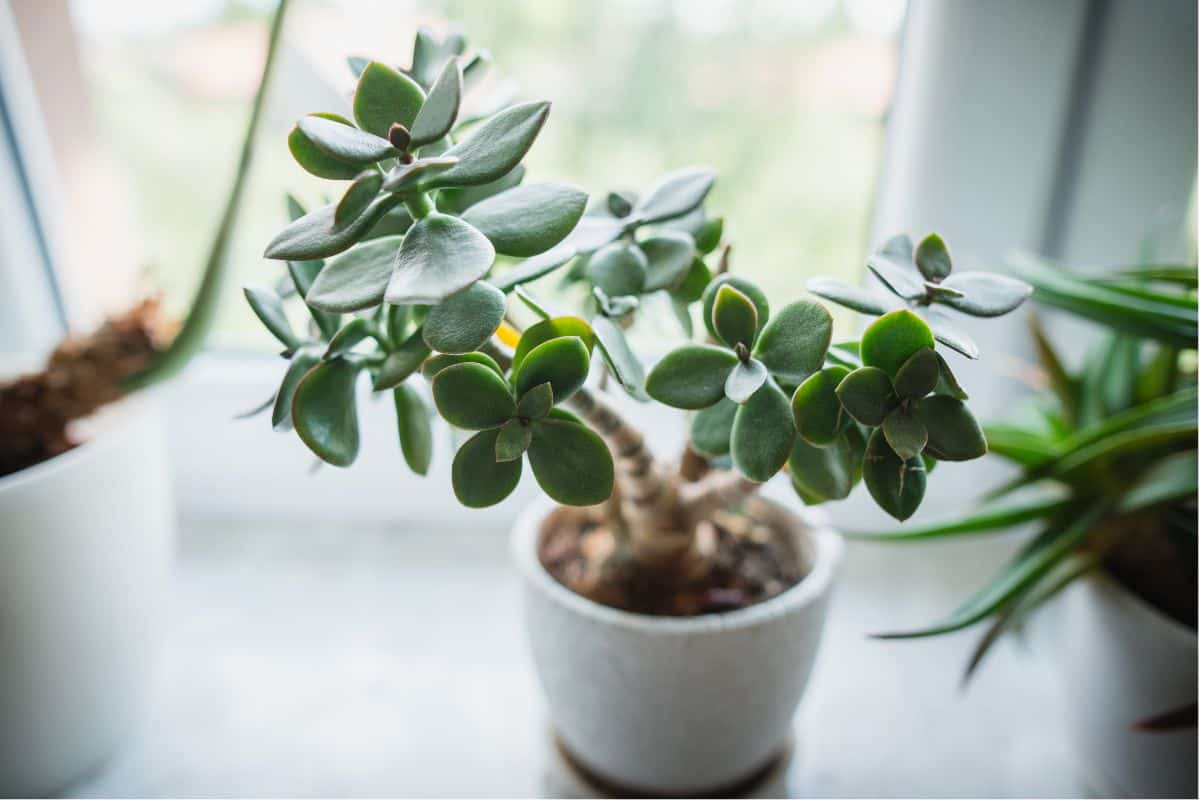
Jade plants are native to South Africa, so they are good at dealing with the heat. That being said, they will suffer if they are left at extreme heats for too long, particularly heats over 100º Fahrenheit.
If you are expecting an intense heat wave and have outdoor jade plants, you can protect them by keeping them in the shade until the heat passes. You can also move them indoors if your plants are in pots, but if your home is significantly cooler than the outside, the sudden change in temperature may shock the plants.
Are Jade Plants Toxic to Pets?
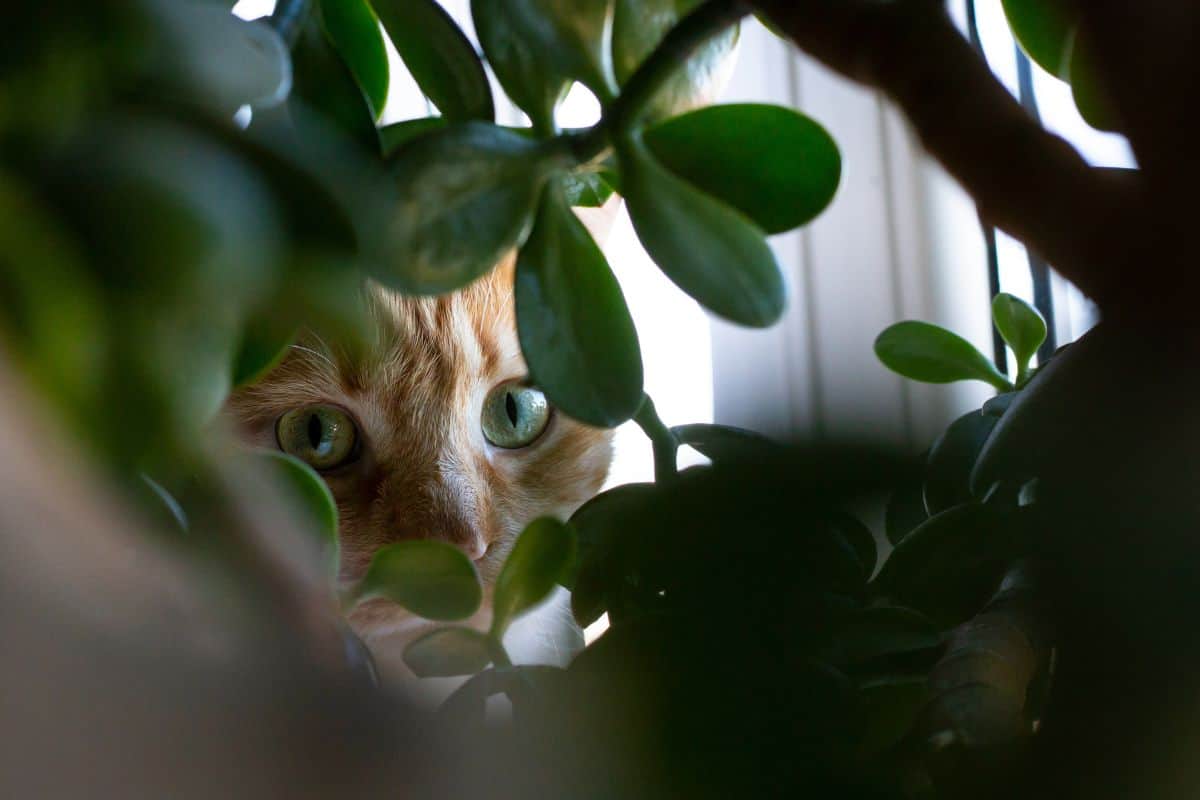
If you have pets, you may want to be more wary of growing jade plants, especially inside. According to the ASPCA, jade plants are toxic to cats, dogs, and even horses.
If you have jade plants and pets, you'll want to keep the plants in a room with a door that the pets cannot access. If you suspect that your pet has eaten jade plant leaves, you should contact your local veterinarian or the Animal Poison Control Center (APCC). Their number is: (888) 426-4435.
How Long Do Jade Plants Live?
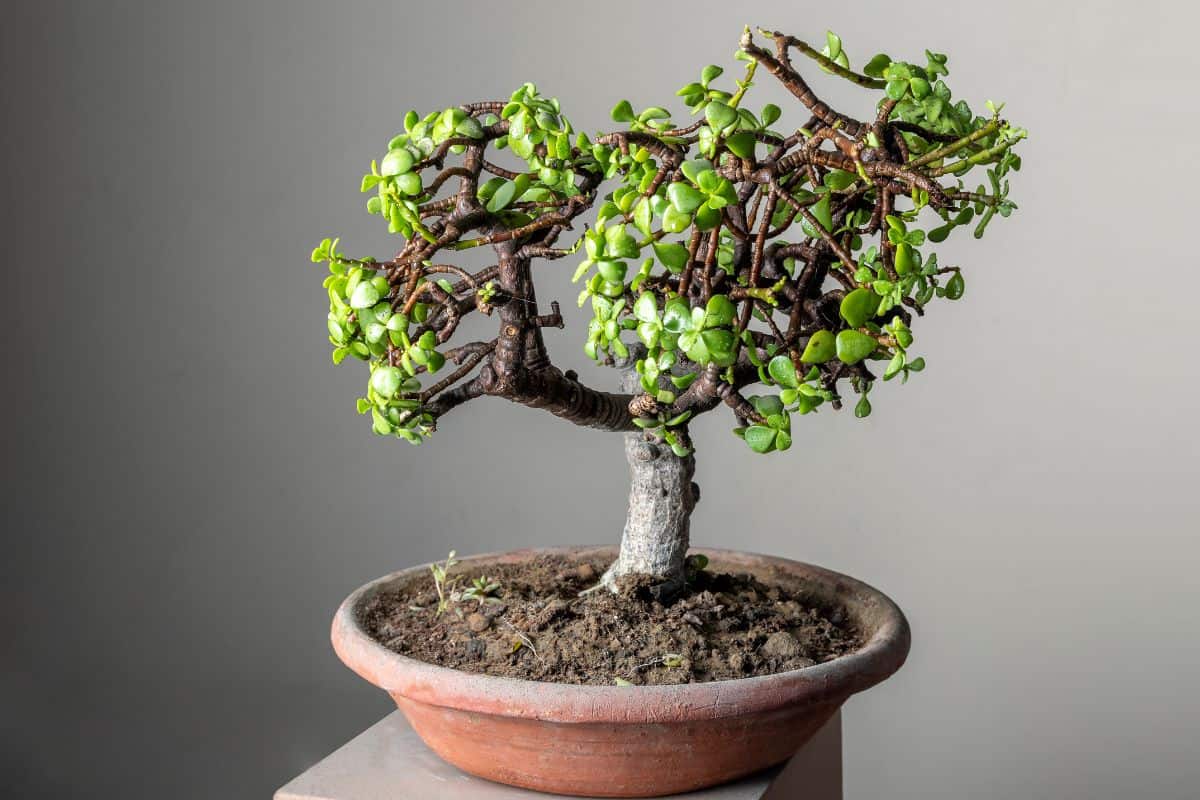
If you take care of your jade plant, it can last you a lifetime, or even several. Jade plants can live for 75 to 100 years. They are among the longest-living of common houseplants.
The long lifespan and ease of care is one reason why jade plants are often used for bonsai. With careful pruning, you can shape jade plants well. Unlike most bonsai plants, jade plants are not trees but succulents. Still, they can create wonderful, tree-like forms.
Do Jade Plants Flower?
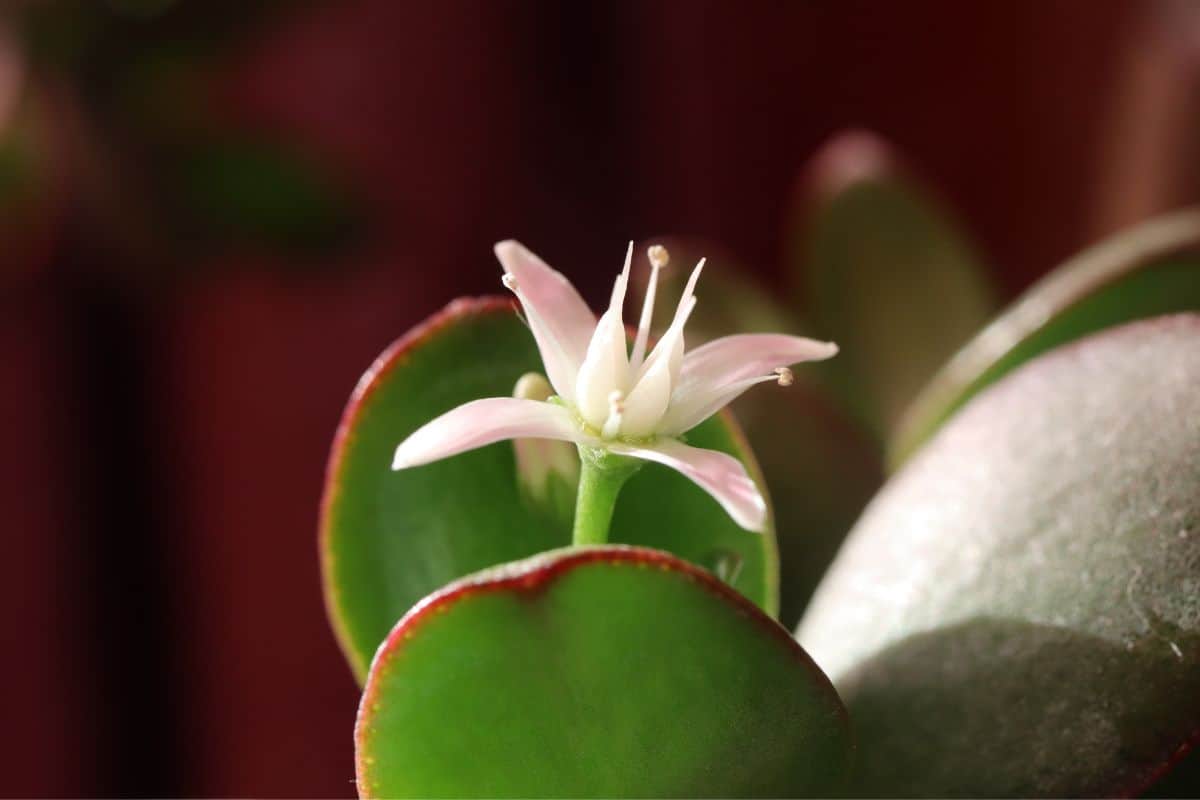
Jade plants are prized for their beautiful and distinctive form that they have all year long. However, in the right conditions, they will even pop up little white blooms.
If you want your jade plant to flower, you'll have to meet a few conditions. First, you should know that it takes a few years before these plants will produce blooms. Most jade plants need to be three or four years old before they will flower.
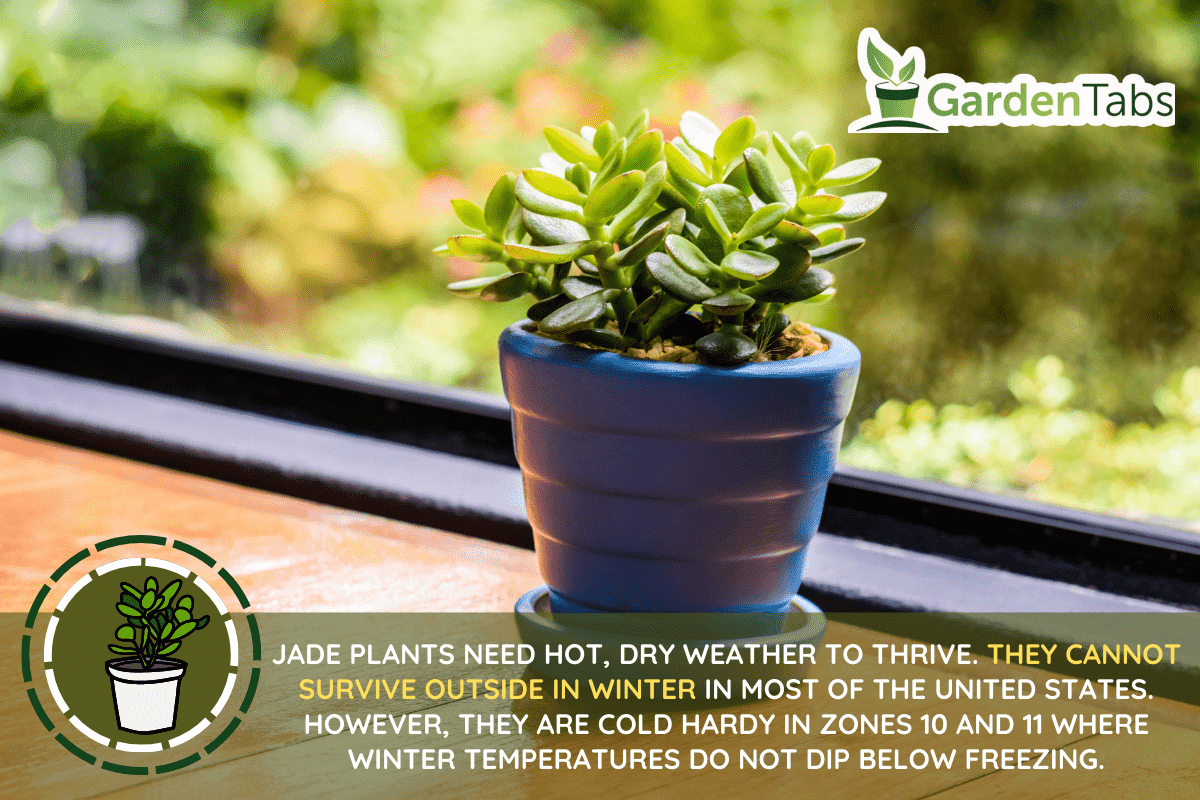
Next, jade plants naturally flower in winter. In their natural habitats, winter is not as cold as it is in most of the US. However, you will need consistently lower temperatures, around 60º Fahrenheit. They will also respond to shorter days and less water. You'll also want to avoid fertilizing your jade plants at this time, although some have had success with fertilizers specifcally formulated to produce flowers.
Conclusion
Jade plants are a beautiful addition to your folio of flora, whether you usually keep them indoors or out. If you want your jade plants to thrive, protect them from the frost and bring them inside when the mercury drops.
Now you know more about how to care for your jade plants. If you found this article helpful, you may want to take a look at these informative posts:


